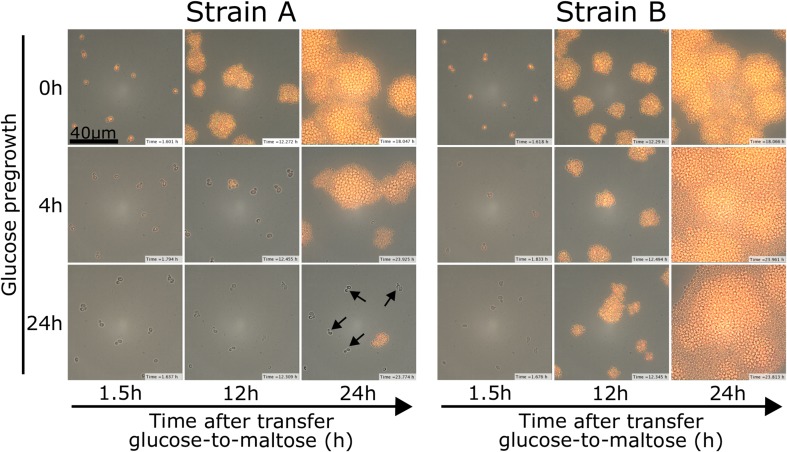Fig. 2.
Time-lapse microscopy showing natural variation, history-dependent behavior and heterogeneity for two strains A and B after a sudden glucose-to-maltose shift. The induction of Mal12-yECitrine fluorescence can be used as a proxy for lag time. The rows show three different pregrowth conditions (0 h – 4 h – 24 h glucose pregrowth), the columns different time points during the microscopy experiment (1.5 h – 12 h – 24 h). The long-lag strain A induces Mal12, the maltose-cleaving enzyme, later than strain B, a short-lag strain. Longer glucose pregrowth leads to longer lag phases for both strains. Within the population, some cells induce Mal12 earlier than others. For strain A, some cells do not induce Mal12 even after 24 h (black arrows) and thus do not start to grow on maltose

